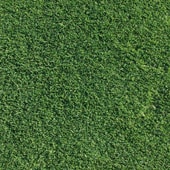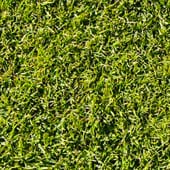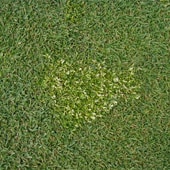Few golfers know what kind of grass their playing on, let alone how the grass has an impact on their games from tee to green. Pros on the other hand are very aware of this change, and can and do make adjustments to their equipment, swings and technique to help better their chances of scoring well. In this article we’ll talk a little bit about the most common types of golf grasses out there, and how they can affect your game.
Most Common Type of Grass
 |
 |
 |
| Bermuda | Bentgrass | Poa Annua |
| – very thick grass – common in the South | – some of the most common golf grass, especially a different strain – creeping bentgrass.- holds its line extremely well, very reliable grass | – commonly considered a parasitic type grass, can easily replicate and takeover other grasses- can look yellow and wiry, and often is uneven on a putting surface |
Bermuda Golf Tips
Bermuda can be a real bitch, especially when you get into the rough. The structure of this grass is thicker per weight than most other grasses played on golf courses. So hitting from the rough can be especially difficult, as this grass tends to grab and twist your club, and robs you of speed, and thus distance. Furthermore, the ball isn’t well supported, so it usually sits down in the rough and needs to be dug out from its nested lie. Consider using a club with more loft and make sure you’re attacking the ball with a descending blow. Tightening up your grip a bit when you’re in the deep stuff can also help. This grass is often found in the southern United States due to its sensitivity to cold. TPC Sawgrass is build on bermuda grass. Moral of this story – keep it in the fairway.
From the fairway, you will notice that more often than not you’ll be hitting from tighter lies, and because of this the ball tends to fly further when struck. Ball first contact is a must, and these fairways have been described as “spongier”. Because this grass grows in more of a gnarly tangle than straight up, lies from the fairway can be a little sticky. Chunking shots on this type of grass is especially common, so hit the ball below the ground.
When you’re playing on Bermuda greens, there’s a couple things you should know. This grass is pretty grainy and will tend to follow the sun throughout the day. The ball will also tend to follow the grain, so knowing how the grain lies is important on this type of grass. If the grass appears a dull, dark green, the grain is likely growing toward you, and will slow your putts. If the grass looks shiny and light green, it is likely growing away from you, and the ball will roll more. This grass also has a tendency not to roll out as much as other grasses, due to its stronger structure.
Bentgrass Golf Tips
Bentgrass rough is pretty tame, the ball can often sit up and doesn’t give you much of a problem to get out of it. Sweeping it off this rough is common. One thing you need to be aware of is watching where this grass is growing in relation to your target. If the grass if growing in the direction of your target, you will often get flyer lies, if it lies against you, expect it to slow your club down quickly upon impact.
Bentgrass fairways are usually softer, and often are mowed quite tightly as the grasses grow straight up. Shots to the fairway often roll out. These fairways are easy and straightforward to hit off of.
Bentgrass greens are some of the most common on the planet, due to their thick root structure and ability to withstand a ton of foot traffic. Furthermore, this grass makes some of the best greens on the planet, and is notorious for being able to hold the line of your putts no matter what type of stroke you put on it. Also a broader variety of strokes can be used on the greens with this type of grass. Ideally you want the ball to be rolling ASAP on the greens, but this is not as important on this type of grass, it is incredibly smooth, and even putting strokes that cause the ball to hop and skip won’t hurt you too much in the end.
Poa Annua Golf Tips
This grass is considered by many greenskeepers as an invasive species. It usually finds its way onto golf courses all over the planet by hitching a ride from one course to another on a golfers shoes. From there it can take root, and begin to grow. You can pick it out because of its lighter green color, and the fact that it grows in small patches amongst other grasses.
Poa Annua rough is slightly less tangly than bentgrass, and often requires less force to help the ball get out. More times than not, this grass doesn’t put up much resistance to golf clubs, and can leave golfers with decent rough lies with the ball sitting up on occasion.
Poa annua grass has one specific quality that a lot of people hate – different strains of the grass can grow at different rates. So this means that if you play in the afternoon, you can be dealing with much bumpier greens than people who played in the morning. Pebble Beach is built on Poa annua, and this is an often complaint of players. When it comes to putting, the faster you can get the ball rolling the better, balls that jump off the face and hop and skip on the greens can often be bumped offline on this type of grass. Furthermore hitting putts true, and on the sweet spot is recommended, anything short of good stroke will cause the ball to roll offline and the mistake will be exaggerated.
